“Australian history is … is so curious and strange … It does not read like history, but like the most beautiful lies.” — Mark Twain1
 Melbourne. Engraving by A.C. Cooke; H17929
Melbourne. Engraving by A.C. Cooke; H17929
When former colonist William Westgarth visited Melbourne in 1888, he found it so changed, as to be virtually unrecognisable:
I now wandered … through countless streets without encountering a single recognizable object … The old Melbourne of my time, of a full generation past, had been entirely swept away, and, but for the merciful act of leaving the old street names, I might have been dropped in this modern Babel without any possibility, within at least its own wide boundary, of knowing where in the wide earth I had arrived.2
In the ensuing decades, much had altered in Victoria. The afterglow of the gold rush was showing no signs of abating, and Melbourne’s population was booming. Construction rates were up by more than fifty per cent, as cashed up speculators drove land prices ever higher. Mortgage banks and building societies egged on the speculators, offering liberal loans with little or no security.
 1838 – 1888 Melbourne then & now : together with the first land sale and present value; MAPS 821.02 EH 1838-1888
1838 – 1888 Melbourne then & now : together with the first land sale and present value; MAPS 821.02 EH 1838-1888
Overseas commentators expressed alarm at the rising debt levels, but they were largely ignored, or met with indignity: ‘We should be terrified at “progress” of that sort in the old country for fear that the bulk of the debts might never be paid. But the Australians boast of it. For them the greater the debt the greater the progress.”3
By the time William Westgarth returned in 1888, Melbourne was one of the richest cities in the world.
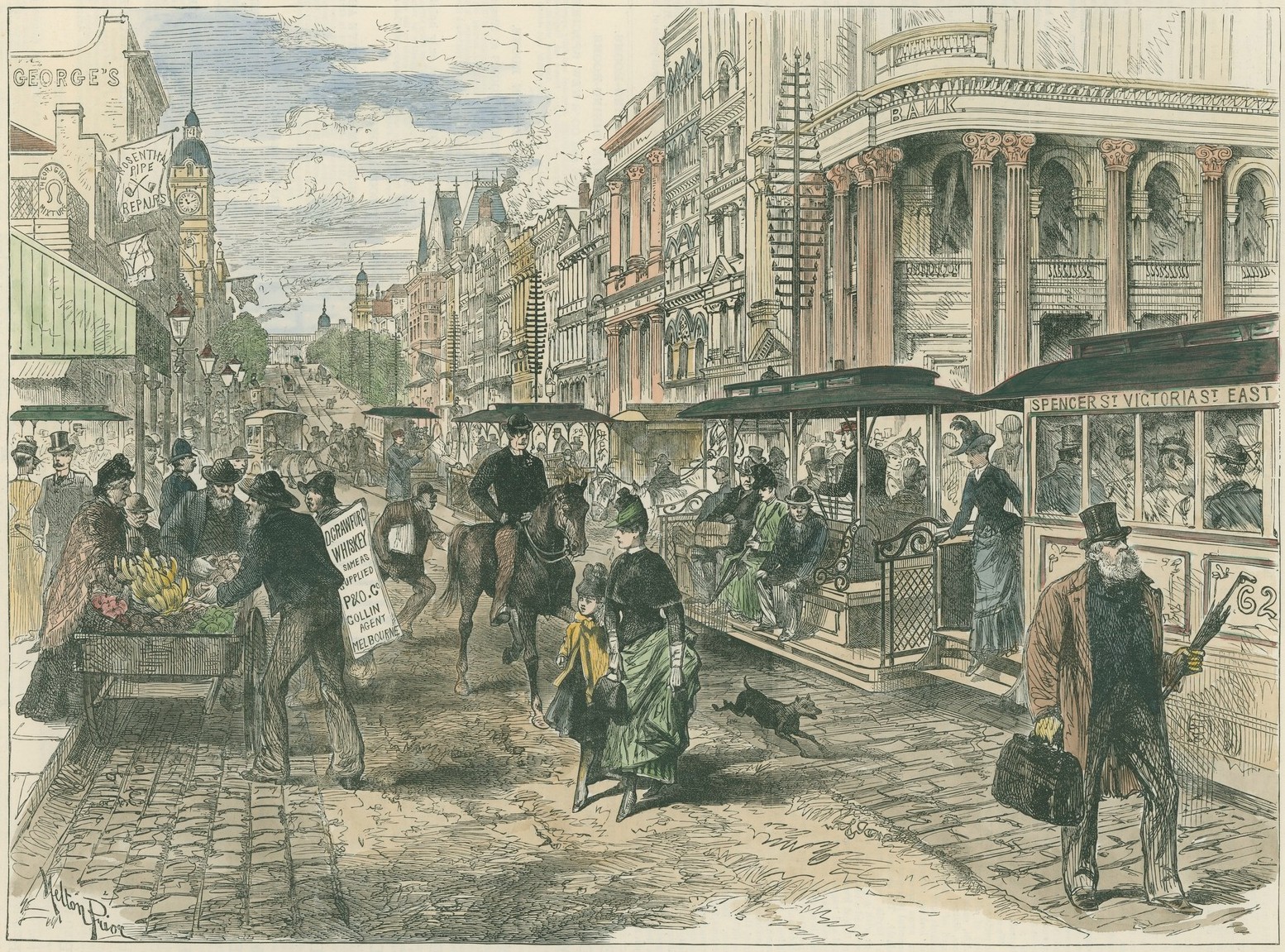 Collins-Street, Melbourne. By Melton Prior; H98.141/1
Collins-Street, Melbourne. By Melton Prior; H98.141/1
Grand buildings and skyscrapers intruded on the skyline; many of them shrines to financial institutions. The architectural style displayed by these buildings – known as Venetian Gothic – was designed to emulate the commercial prestige of Venice. They exuded power, wealth and influence, mirroring the aspirations of the city’s affluent residents.
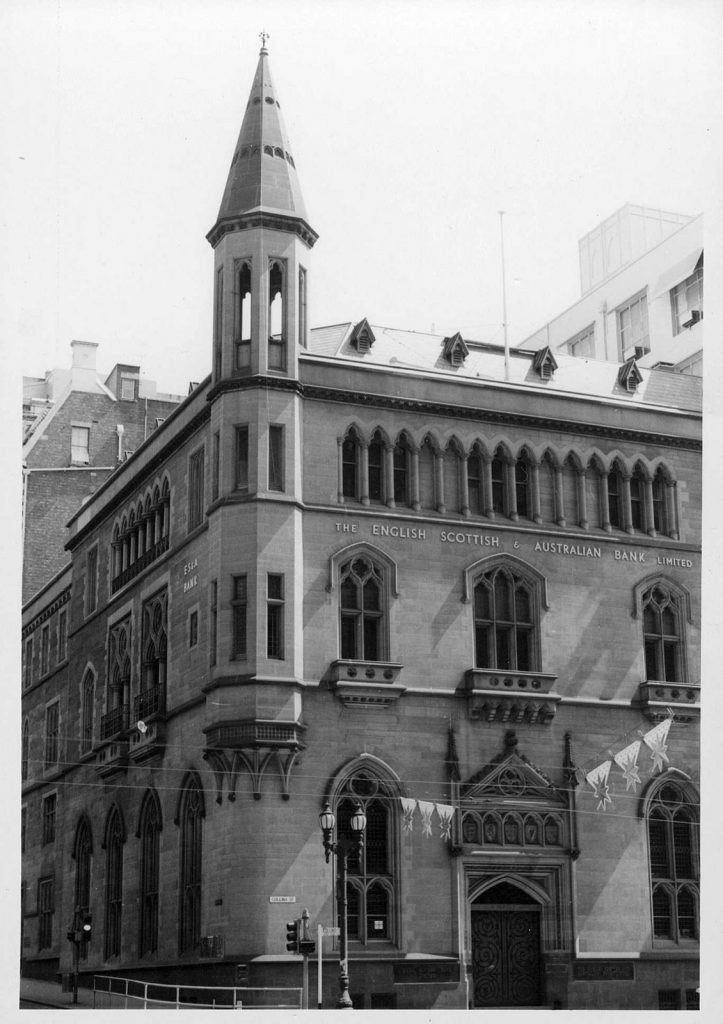 Melbourne. E. S. & A. Bank. Collins St. Photograph by J.T.Collins; H98.252/843
Melbourne. E. S. & A. Bank. Collins St. Photograph by J.T.Collins; H98.252/843
In 1884, the Victorian government poured fuel on the fire, announcing the infamous ‘Octopus Act,’ – an ambitious plan authorising the construction of 66 new railway lines, many of which would connect previously inaccessible tracts of land to the city.
The new infrastructure was fertile ground for real estate agents, who used proximity to the railway line as a major selling point. Free first class train tickets were used to lure prospective buyers to auctions, where complimentary luncheons of chicken and champagne awaited.4
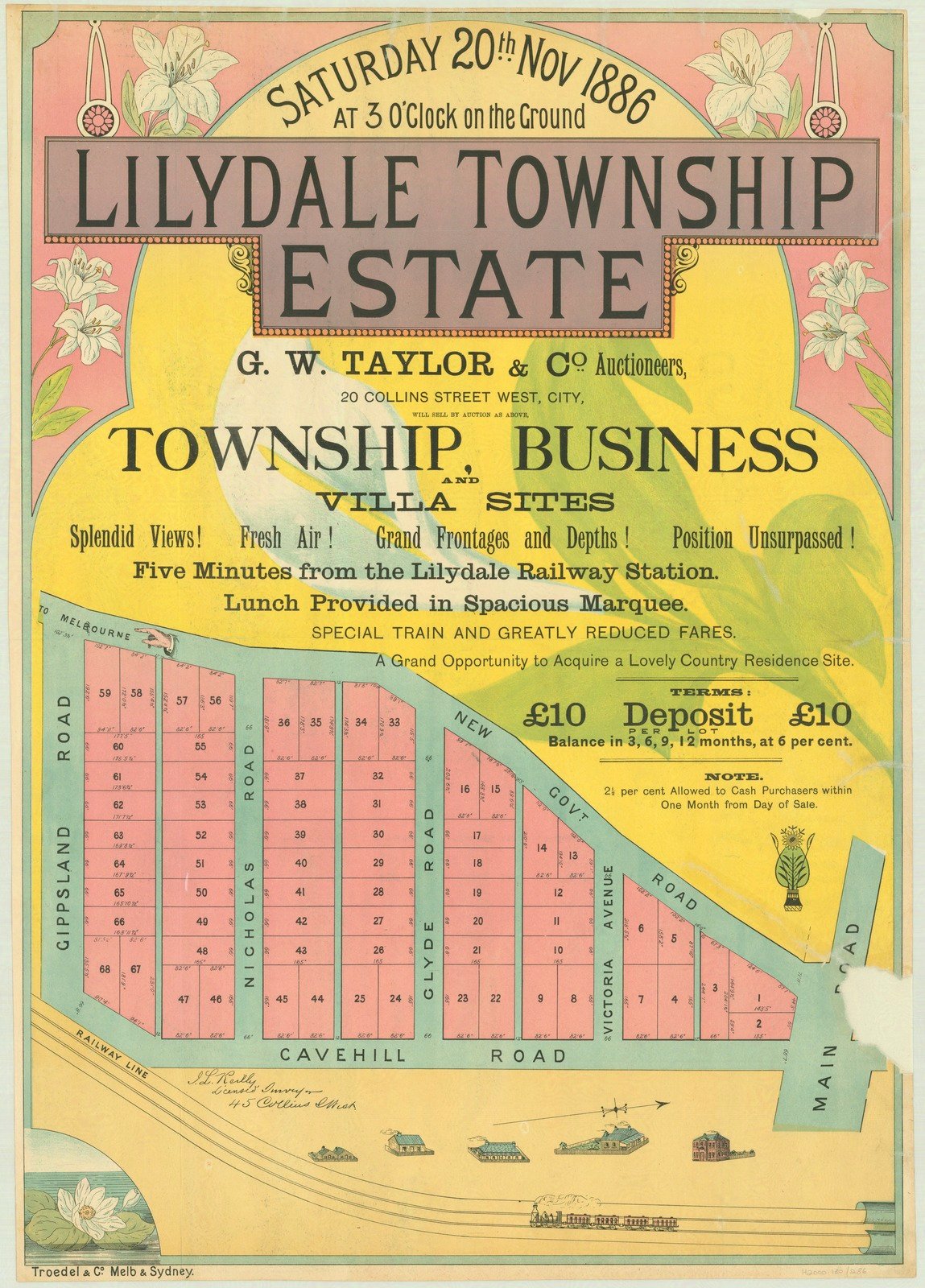 Lilydale Township Estate [Auction notice]; H2000.180/286
Lilydale Township Estate [Auction notice]; H2000.180/286
 Free railway pass for Griffin Estate auction. From Batten & Percy collection, State Library Victoria
Free railway pass for Griffin Estate auction. From Batten & Percy collection, State Library Victoria
Politicians too, got in on the act, purchasing land ‘in the middle of nowhere,’ building railway connections to the city, and then selling the land at vastly inflated prices.5
William Westgarth was stunned at the expansion of city’s suburbs, remarking that:
The Melbourne suburbs were quite as surprising as the city itself. Almost countless miles of streets had taken the place of the country roads or mere bush tracks of my recollection. While I stood wondering at these changes, I had to regret that the old features had so completely disappeared that I was at home nowhere…6
 Moreland Road, The Land of Promise, West Brunswick, close to Essendon. From Dyer collection of auctioneers’ plans, State Library Victoria
Moreland Road, The Land of Promise, West Brunswick, close to Essendon. From Dyer collection of auctioneers’ plans, State Library Victoria
Along with opulent buildings and sprawling new suburbs, a love of cast iron lacework had infiltrated the city. “Iron petticoats” were draped over building facades everywhere. Balcony balustrades and verandahs, roof crests and gate posts; even garden fountains were not safe from adornment.
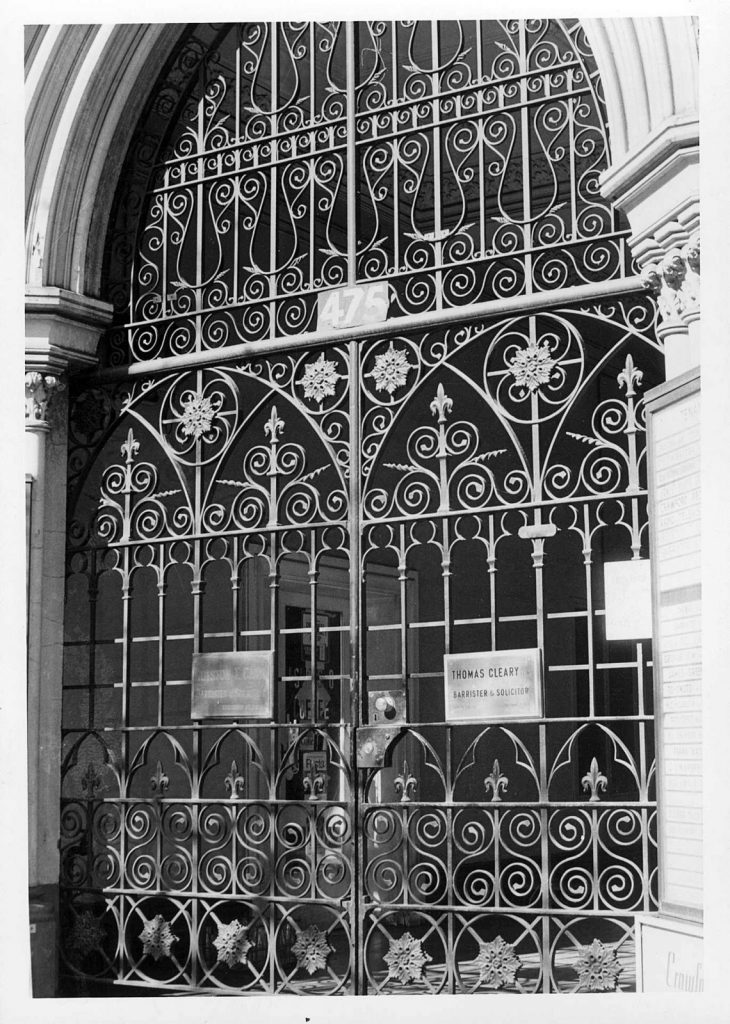
Melbourne. Olderfleet. Gateway. 475 Collins St. Photograph by J.T.Collins; H98.252/825
Concern over appearances extended to one’s social circles, and ‘social advertising,’ (as journalist Edmund Finn termed it), was rife in the city. Fashionable citizens did the block in their finery, whilst in church, the wealthy paid to sit apart from the poor.7
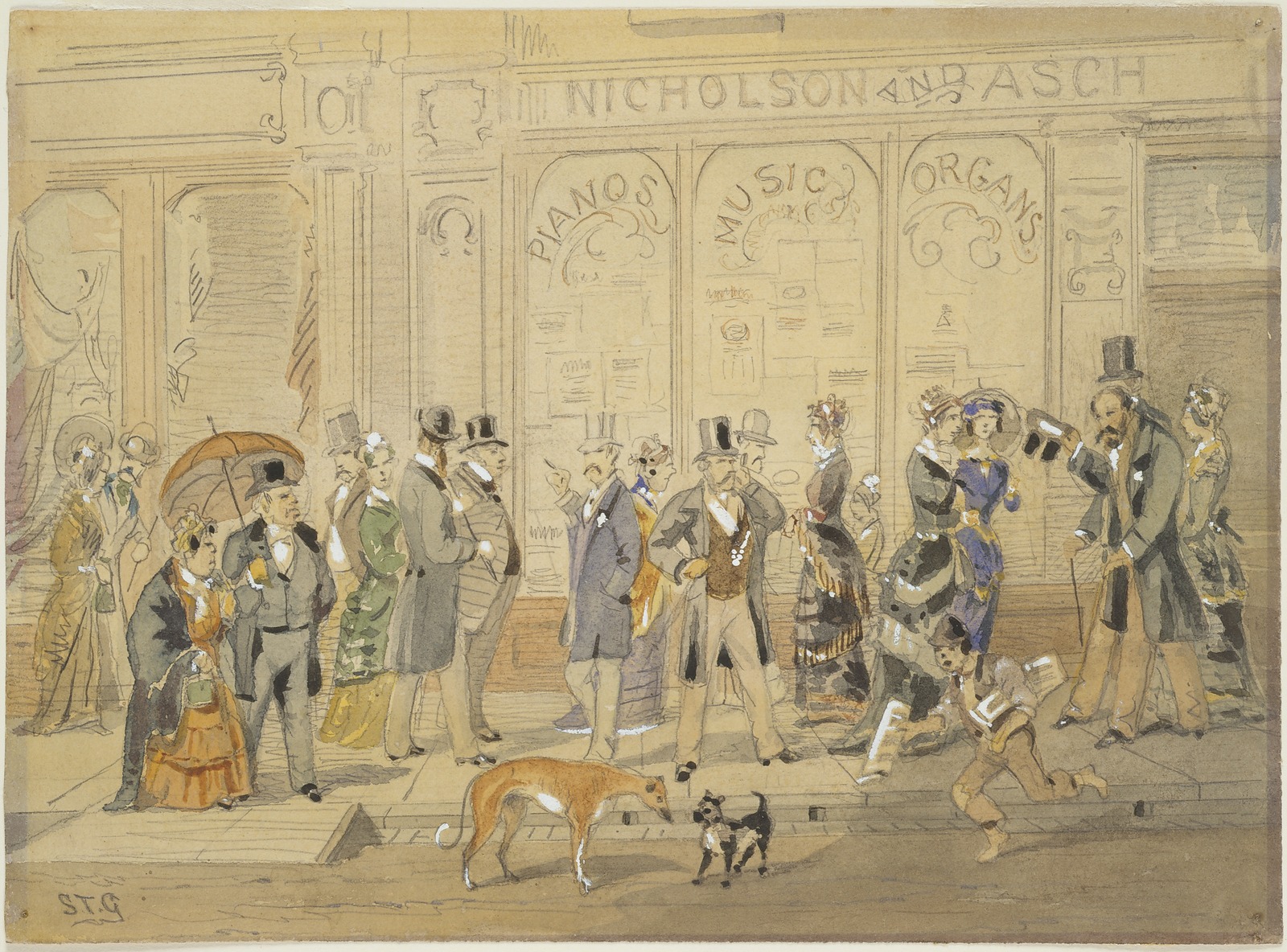 Doing the Block. Gt. Collins St. By S.T.Gill; H332
Doing the Block. Gt. Collins St. By S.T.Gill; H332
Westgarth was struck by the city’s technological advancement, observing that: ‘…the electric light, electric bells, and other electric uses, the telephone, and the lift system, all seem to me to be in more general use than in London…’8
Electric light in Swanston Street. Print published in The Australasian sketcher, 7 May 1881; A/S07/05/81/153
He wasn’t the only visitor to be impressed. British journalist George Augustus Sala declared Melbourne ‘marvellous’. ‘I found Melbourne a really astonishing city, with broad streets full of handsome shops and crowded with bustling well-dressed people’.9
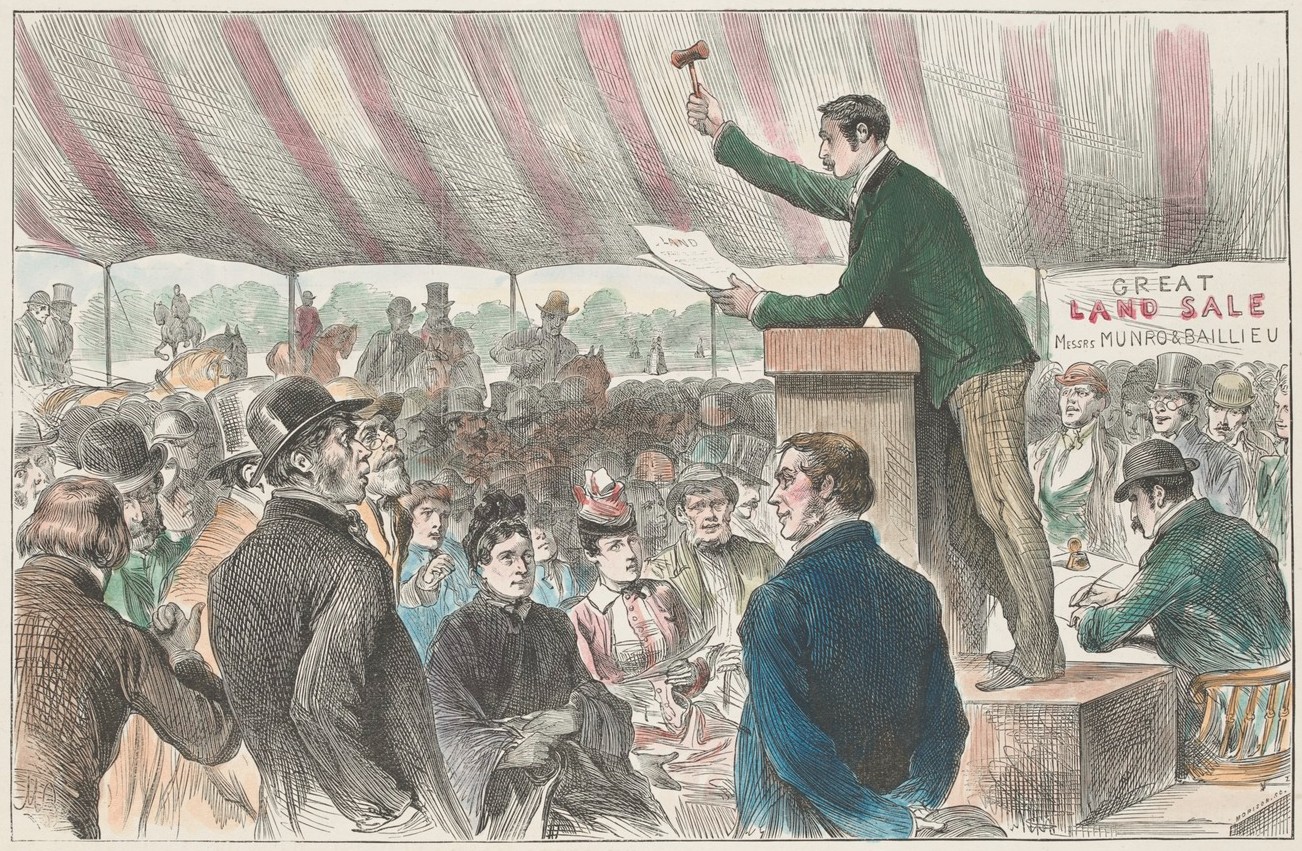 Great land sale in Melbourne, 1889. Engraving by Sc. Morrison; H98.143
Great land sale in Melbourne, 1889. Engraving by Sc. Morrison; H98.143
Whilst Sala expressed awe for Melbourne’s achievements, there was a sense of unease in his plaudits too:
I have been mildly accused by friends in this country of having “bank on the brain” … But, I repeat, I cannot help it … In Australia, generally, and in Melbourne, in particular, it is the banks that haunt you, and subdue your sense to one absorbing feeling of wonder and reverence for the power of Mammon. (The Argus, 31 August 1885, p. 7)
George Sala’s disquiet was eerily prophetic, because it was the banks that were ultimately Melbourne’s undoing. In 1891, a financial crisis overseas sparked a massive banking collapse in Australia. It would take Victoria decades to recover.
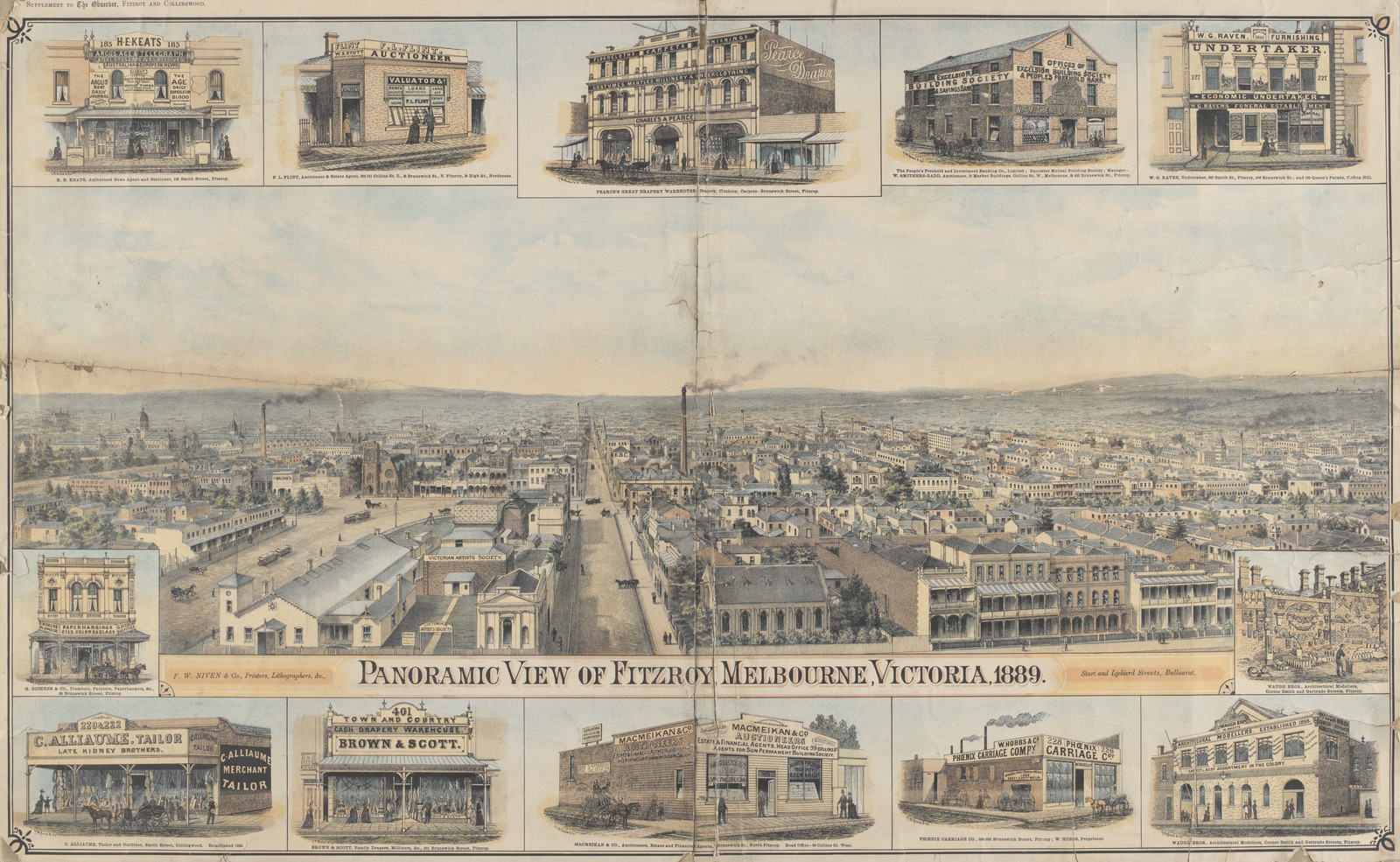 Panoramic view of Fitzroy, Melbourne, Victoria, 1889. Lithograph by F.W.Niven; H4634
Panoramic view of Fitzroy, Melbourne, Victoria, 1889. Lithograph by F.W.Niven; H4634
Written by Sarah Matthews, Librarian, Visitor & Information Services
References
- Twain, M., & Watson, D., 2006, The wayward tourist : Mark Twain’s adventures in Australia; introduction by Don Watson, Melbourne University Publishing, Carlton, Vic, p. 65
- Westgarth, W., 1889, Half a century of Australasian progress, a personal retrospect, Sampson Low, Marston, Searle & Rivington, London, UK, p. 47
- ‘The Money Market,’ The Standard, 22 July 1885, p. 6
- Davison, G., 2008, ‘Land Boom,’ eMelbourne
- Cannon, M., 1986, The land boomers: the complete illustrated history, Lloyd O’Neil, South Yarra, Vic, pp. 83-92
- Westgarth, W., & Michie, A., 1888, Personal recollections of early Melbourne and Victoria, George Robertson & Co., Melbourne, Vic, p. 168
- Davison, G., 2008, ‘Class,’ eMelbourne
- Westgarth, W., 1888, Personal recollections of early Melbourne and Victoria, George Robertson & Co., Melbourne, Vic, p. 170
- Sala, G. A., 1895, The life and adventures of George Augustus Sala, p. 343



Thank you! I absolutely loved this. My great grandfather worked for a ‘Starr-Bowtell’ building society and he crashed in the crash. My grandma was one of the many ‘we used to be rich’ ladies who never recovered their social capital. So many Melburnians made big adjustments just like we are doing now.
Loved your descriptions and especially the photos. As a teenager in the 50’s the city gave us everything. Afternoon tea with my aunt at the Windsor, ballet, pictures (as we called them). I missed Cole’s Book Arcade.
Pat O’Brien
Melbourne
I found the painting of Melbourne in 1838 interesting since my ancestors arrived into Melbourne 27th October 1839 on the David Clark, the 1st ship load of free settlers into Melbourne. Not long after the painting.